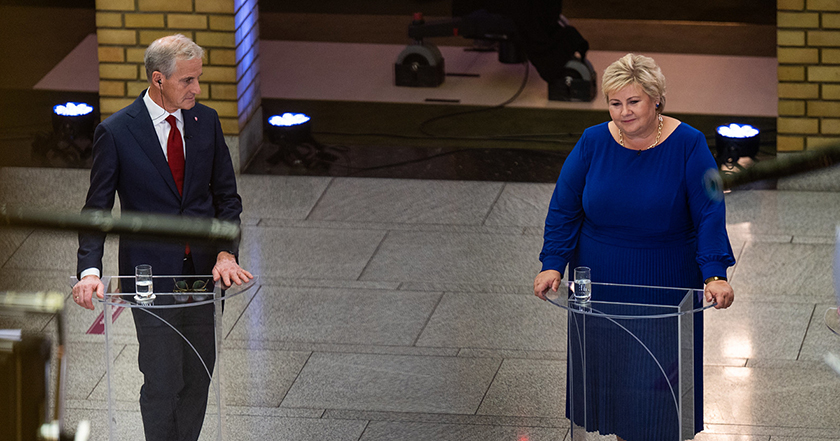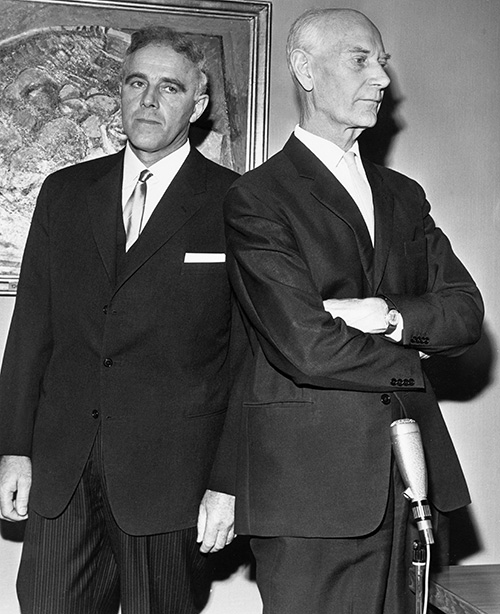
Jonas Gahr Støre and Erna Solberg on election night after the 2021 parliamentary election. The live broadcast took part in the Storting’s Central Hall. Photo: Storting.
The formation of a new government
When does a government have to resign? And how is a new government formed?
Norway is a parliamentary democracy which practises a system of parliamentarianism. This means that a majority of the 169 Members of Parliament (MPs) has the power to bring down a government. A government does not necessarily need majority support for all its business, but if the Storting passes a motion of no confidence in the sitting Government, it must step down. This system is known as “negative parliamentarianism”.
When is there a change in government?
If a general election results in a change in the parliamentary majority, and consequently lays the parliamentary basis for a new government, the sitting government will usually resign. This need not be the case, however. A government also has the option of remaining in power until it is brought down by a motion of no confidence. It is customary for a government to step down after the Speech from the Throne has been made and the Fiscal Budget proposal has been delivered to the Storting in early October.
A government may also demand a vote of confidence. In other words, it may declare that it will resign if the majority in the Storting votes against it on a particular matter. If the government in question does not receive the parliamentary support it is looking for, there will be a change in government.
A negative majority may also lead to a change in government. This means that a government may choose to resign if two or more motions of no confidence have been tabled, neither of which on its own achieves a majority, but which together do so.
There may be other reasons for a change. These include internal divisions within a government, a prime minister wanting to step down, a party in favour of a change of leadership, or the illness or death of a prime minister.

The new Prime Minister, Per Borten (Centre Party), and the departing Prime Minister, Einar Gerhardsen (Labour Party), at the Office of the Prime Minister on 13th October 1965. Photo: NTB Scanpix.
What happens when a new government is to be appointed?
Article 12 of the Norwegian Constitution states: “The King himself chooses a Council from among Norwegian citizens who are entitled to vote. This Council shall consist of a Prime Minister and at least seven other Members.”
In practice, the King appoints the government that the Storting is willing to accept. There are usually political discussions between the political parties in the Storting first. When the result of these talks is clear, the departing prime minister or the President of the Storting will advise the King who he should give the responsibility of prime minister to, or how he should otherwise proceed.
When a prime minister has been appointed, he or she chooses the government’s other ministers. These are then appointed by the King in a session of the Council of State.
Different types of government
A majority government consists of parties that have the support of over half the MPs in the Storting. A minority government has the support of fewer than half. Some minority governments agree to have a fixed collaboration with other parties, which enables them to carry out their policies. Others are dependent on reaching a parliamentary majority on an issue-to-issue basis.
A government may consist of a single party, or it may be a coalition government comprising two or more parties.
Last updated: 15.10.2021 16:51